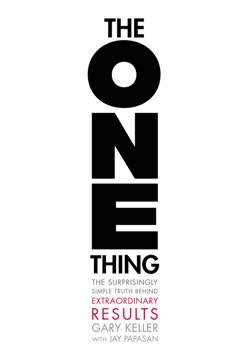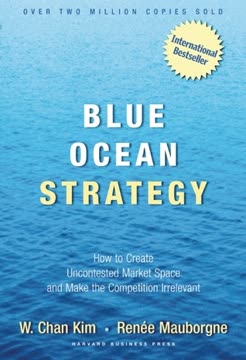Key Takeaways
1. Design thinking is a powerful approach to business innovation and problem-solving
Design is fundamentally about enhancing the way you look at the world.
Look at problems differently. Design thinking provides a systematic approach to innovation that puts the customer at the center. It involves observing people and situations with fresh eyes, reframing problems as opportunities, generating many ideas, prototyping rapidly, and testing with real users. This process helps businesses move beyond incremental improvements to create breakthrough products and services.
Embrace uncertainty. A key principle of design thinking is getting comfortable with ambiguity and the unknown. Rather than trying to plan everything perfectly upfront, designers take an iterative approach of learning by doing. They make their ideas tangible quickly through prototypes and experiments, gather feedback, and evolve their concepts. This allows for faster learning and reduces the risk of investing heavily in the wrong solution.
Develop new skills. Adopting design thinking requires cultivating skills like empathy, visual thinking, experimentation, and collaboration. Organizations need to create space for creativity and give people permission to challenge assumptions. With practice, design thinking can become a powerful approach for tackling complex business challenges and uncovering new opportunities for growth and innovation.
2. Understand your customer, context, and business to drive innovation
We humans are visual, spatial creatures. To really have an impact and sum up discussions and decision points so that they'll be remembered forever, do what David Sibbet says, and capture what's been said (at least some of it) visually.
Gain customer empathy. The foundation of design thinking is developing a deep understanding of customers and their needs. This goes beyond just demographic data to really observe and engage with people in their natural environments. Use tools like customer interviews, ethnographic research, and journey mapping to uncover unmet needs and pain points.
Map the context. Look at the broader forces shaping your business environment, including:
- Technology trends
- Competitive landscape
- Regulatory environment
- Economic factors
- Social and cultural shifts
Visual tools like the Context Canvas can help capture and synthesize this information.
Analyze your business model. Thoroughly understand how your business creates, delivers, and captures value. The Business Model Canvas is a helpful framework for mapping out the key components of your business model and identifying areas for innovation. Look for opportunities to better align your offering with customer needs or leverage new technologies and partnerships.
3. Generate and explore ideas through structured ideation techniques
Ideas are just thoughts based on assumptions. On their own, ideas have little value.
Quantity over quality. The goal of ideation is to generate a large volume of ideas, not to judge or evaluate. Use techniques like brainstorming, mind mapping, and analogous thinking to push beyond obvious solutions. Aim for at least 100 ideas in a session.
Build on ideas. Great ideas often emerge from combining and evolving initial concepts. Use methods like:
- "Yes, and..." thinking to build on others' ideas
- Forced connections between unrelated concepts
- Reverse thinking (e.g. "How could we make this worse?")
- Role-playing different personas
Structure the process. While creativity can feel chaotic, using structured ideation tools helps channel thinking productively. Some effective frameworks include:
- Creative Matrix: Generate ideas at the intersection of customer needs and enabling solutions
- Business Model Canvas: Systematically explore new business model possibilities
- Wall of Ideas: Rapidly generate and cluster a high volume of ideas
4. Bring ideas to life quickly through prototyping and experimentation
Prototypes, like Dropbox's video, are not meant to be a full-blown product. They're built such that they can be experienced by the customers with the real value being the lessons learned which will ultimately lead to a better idea.
Start simple. Begin with low-fidelity prototypes using basic materials like paper, cardboard, or digital mockups. The goal is to make ideas tangible enough to gain insights, not create a polished final product. Ask "What's the simplest way to test this core concept?"
Prototype to learn. The purpose of prototyping is to answer specific questions and test assumptions. For each prototype, clearly define:
- What are you testing?
- What feedback do you need?
- How will you measure success?
Iterate rapidly. Create multiple versions, testing different aspects of your concept. Evolve your prototypes based on user feedback, increasing fidelity as you validate core assumptions. Embrace "failing forward" - each prototype teaches you something valuable.
5. Validate assumptions and pivot based on real-world feedback
After all, an idea is nothing more than an idea: something that seems great on paper based on a bunch of assumptions. Ideas are abstract and have little substance on their own.
Identify key assumptions. Every business idea is built on assumptions about customers, the market, and your solution. Use tools like the Riskiest Assumption Canvas to surface and prioritize the critical beliefs that need to be true for your concept to work.
Design smart experiments. Create targeted tests to validate or invalidate your riskiest assumptions. Follow this process:
- Form a clear hypothesis
- Define measurable success criteria
- Create a minimal prototype or experiment
- Collect data and analyze results
- Decide to persevere, pivot, or kill the idea
Pivot or persevere. Based on experiment results, make evidence-based decisions about your concept:
- Persevere: Double down on promising directions
- Pivot: Change a fundamental aspect of your business model
- Kill: Abandon ideas that don't resonate with customers
Use the Validation Canvas to track your experiments and pivots over time.
6. Scale design thinking across your organization
Scaling is about using the same process described in this book to figure out how to scale the process to an entire organization of people, wanting and needing better ways to create opportunities from uncertainty.
Start small. Begin with pilot projects to demonstrate the value of design thinking. Choose high-visibility challenges where you can show tangible results. Use these successes to build momentum and buy-in from leadership.
Build capability. Develop internal design thinking expertise through:
- Training programs and workshops
- Hiring designers and innovation specialists
- Creating centers of excellence or innovation labs
- Partnerships with design firms or accelerators
Embed in processes. Integrate design thinking methods into existing business processes like strategic planning, product development, and customer experience initiatives. Create toolkits and playbooks to make methods accessible.
Shape culture. Foster a culture that embraces experimentation, learning from failure, and putting the customer first. Recognize and reward innovative behaviors. Lead by example, with executives modeling design thinking approaches.
7. Cultivate a designer's mindset to thrive amid uncertainty
Design is about preparation. The design process requires preparation in order for it to run well. You must prepare to observe and understand your customers, business, and context. You must prepare to ideate, prototype, and validate.
Embrace ambiguity. Get comfortable with not knowing all the answers upfront. Trust in the iterative process of exploration and discovery. Frame challenges as opportunities for innovation.
Stay curious. Approach situations with a beginner's mindset, always seeking to learn. Ask probing questions, challenge assumptions, and look for inspiration in unexpected places. Cultivate empathy for others' perspectives and experiences.
Think visually. Use sketching, diagramming, and other visual tools to explore ideas and communicate concepts. Visual thinking helps generate new insights and align teams around a shared understanding.
Bias towards action. Don't get stuck in analysis paralysis. Quickly prototype ideas to make them tangible. Learn by doing and be willing to fail forward. Treat every interaction as an opportunity to gain insights and evolve your thinking.
Last updated:
FAQ
What's "Design a Better Business" about?
- Purpose and Focus: "Design a Better Business" by Patrick van der Pijl, Justin Lokitz, and Lisa Kay Solomon is about equipping businesses with new tools, skills, and a mindset for strategy and innovation.
- Design Thinking: The book emphasizes the importance of design thinking as a disciplined, repeatable process to create unique value and make better business decisions.
- Iterative Process: It introduces a systematic approach to problem-solving that focuses on doing rather than planning, encouraging businesses to thrive amidst uncertainty and change.
- Real-World Examples: The book includes numerous case studies and examples of companies that have successfully used design thinking to innovate and grow.
Why should I read "Design a Better Business"?
- Practical Tools: The book provides practical tools and frameworks that can be applied immediately to improve business strategy and innovation.
- Mindset Shift: It encourages a shift in mindset from traditional linear planning to a more dynamic, iterative approach to business challenges.
- Real-World Success: Learn from real-world examples and case studies of companies that have successfully implemented design thinking.
- Comprehensive Guide: It serves as a comprehensive guide for anyone looking to harness opportunities born of uncertainty to design a better business.
What are the key takeaways of "Design a Better Business"?
- Embrace Uncertainty: Uncertainty is a secret weapon that can lead to innumerable opportunities if approached with the right mindset.
- Iterative Design Process: The design process is iterative and cyclical, focusing on understanding, ideating, prototyping, validating, and scaling.
- Customer-Centric Approach: Always start with the customer to understand their needs, pains, and gains, which informs the design of value propositions.
- Continuous Learning: The book emphasizes the importance of continuous learning and adaptation through prototyping and validation.
How does "Design a Better Business" define design thinking?
- Empowering Approach: Design thinking is described as an empowering approach to looking at the world and igniting new possibilities to make it better.
- Process and Mindset: It is both a process and a mindset that unlocks new, sustainable value from change and uncertainty.
- Iterative and Flexible: The process is iterative, allowing for flexibility and resilience in the face of constant change.
- Human-Centered: Design thinking focuses on understanding and solving problems from a human-centered perspective.
What is the Double Loop in "Design a Better Business"?
- Concept Overview: The Double Loop is a framework that emphasizes starting with a point of view and iterating through understanding, ideation, prototyping, and validation.
- Iterative Process: It highlights the importance of continuously refining ideas and strategies based on feedback and learning.
- Focus on Learning: The Double Loop encourages businesses to learn from each iteration and adapt their strategies accordingly.
- Visual Representation: The book provides a visual representation of the Double Loop to guide readers through the design process.
How does "Design a Better Business" suggest identifying customer needs?
- Observation and Questioning: The book emphasizes the importance of observing customers in their natural environments and asking the right questions to uncover their true needs.
- Customer Journey Mapping: It suggests mapping the customer journey to gain insights into how customers experience a problem and interact with a business.
- Value Proposition Canvas: Use the Value Proposition Canvas to understand customer jobs-to-be-done, pains, and gains, and design solutions that address these effectively.
- Iterative Validation: Continuously validate assumptions about customer needs through prototyping and feedback.
What tools does "Design a Better Business" offer for ideation?
- Creative Matrix: The Creative Matrix is a tool to spark new ideas at the intersections of different categories, encouraging divergent thinking.
- Business Model Canvas Ideation: Use the Business Model Canvas to explore new business model options by focusing on different epicenters like resources or customer segments.
- Wall of Ideas: This technique involves generating a large volume of ideas quickly using trigger questions and clustering them into themes.
- Innovation Matrix: The Innovation Matrix helps categorize ideas based on their potential impact and feasibility, aiding in the selection of ideas to prototype.
How does "Design a Better Business" approach prototyping?
- Start Small: Begin with simple, low-fidelity prototypes to test ideas quickly and cheaply.
- Iterative Testing: Use prototypes to test specific aspects of an idea, learn from feedback, and iterate on the design.
- Diverse Methods: The book suggests various prototyping methods, including sketching, paper prototyping, and digital mockups.
- Focus on Learning: Prototyping is about learning and refining ideas, not creating a final product.
What is the role of validation in "Design a Better Business"?
- Test Assumptions: Validation involves testing the riskiest assumptions underlying an idea to determine their validity.
- Experimentation: The book provides tools like the Experiment Canvas to design and run experiments that yield actionable insights.
- Pivot or Persevere: Based on validation results, decide whether to pivot (change direction) or persevere (continue with the current approach).
- Continuous Process: Validation is an ongoing process that informs the design journey and helps refine strategies.
How does "Design a Better Business" suggest scaling a business?
- Iterative Scaling: Scaling is about continuing the design journey, tackling new problems, and raising the stakes.
- Network and Support: Build a network of customers, partners, and experts to support scaling efforts.
- Trust and Culture: Foster a culture of trust and design thinking within the organization to enable successful scaling.
- Investment Readiness: Use tools like the Investment Readiness Level to assess and prepare for scaling opportunities.
What are the best quotes from "Design a Better Business" and what do they mean?
- "Uncertainty is your secret weapon." This quote highlights the book's central theme that uncertainty, when approached with the right mindset, can lead to significant opportunities for innovation.
- "Design is about creating the conditions by which businesses thrive, grow, and evolve." It emphasizes the transformative power of design thinking in driving business success.
- "Your first idea will very likely not survive contact with a customer." This underscores the importance of validation and iteration in refining ideas based on real-world feedback.
- "It's not about working harder. It's about working smarter." This quote encapsulates the book's message that design thinking enables more effective and efficient problem-solving.
How can "Design a Better Business" help me in my career?
- Skill Development: The book provides practical tools and frameworks that can enhance your problem-solving and strategic thinking skills.
- Mindset Shift: It encourages a shift in mindset towards a more dynamic, customer-centric approach to business challenges.
- Real-World Application: Learn from real-world examples and case studies that demonstrate the successful application of design thinking.
- Career Advancement: By adopting the principles and practices outlined in the book, you can position yourself as a forward-thinking leader capable of driving innovation and growth.
Review Summary
Design a Better Business receives largely positive reviews, with readers praising its visual design, practical tools, and innovative approach to business strategy. Many find it useful for entrepreneurs, designers, and students. Criticisms include its abstract nature and potential lack of depth for experienced professionals. Some reviewers note it's best suited for those new to design thinking and iterative product development. The book's interactive format and online resources are highlighted as strengths, while a few mention it may be overwhelming or difficult to digest initially.
Similar Books










Download PDF
Download EPUB
.epub digital book format is ideal for reading ebooks on phones, tablets, and e-readers.




